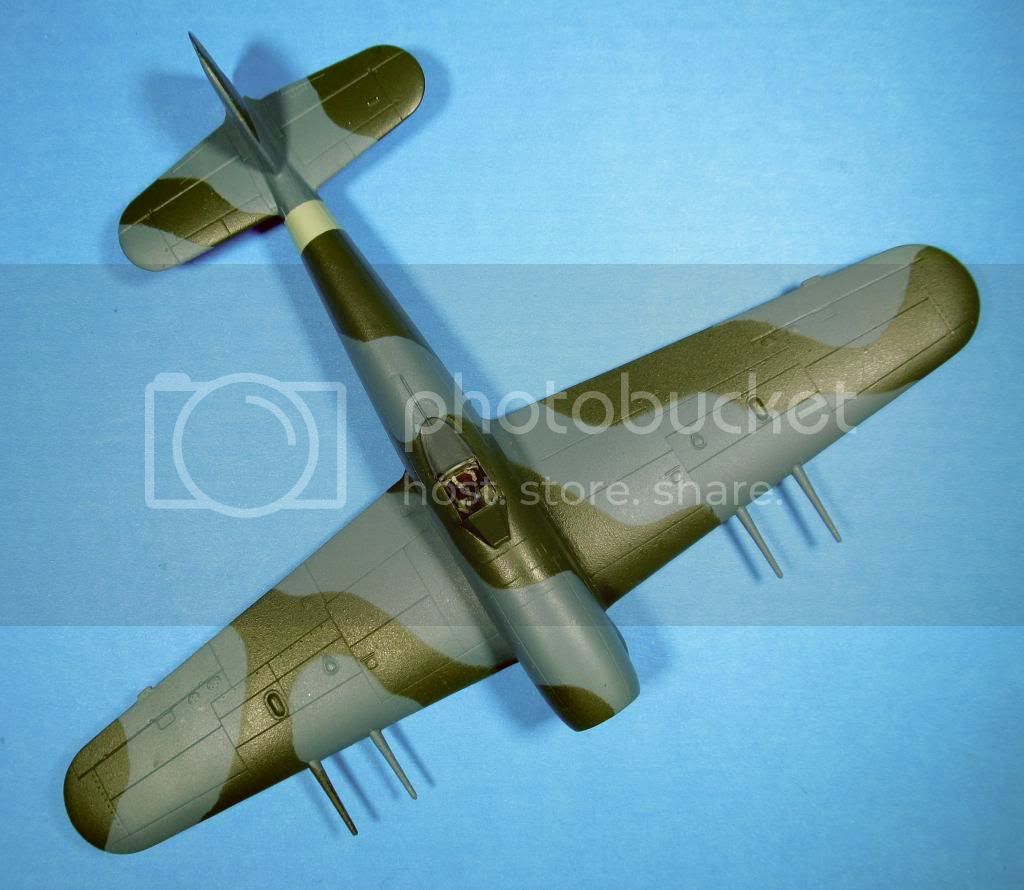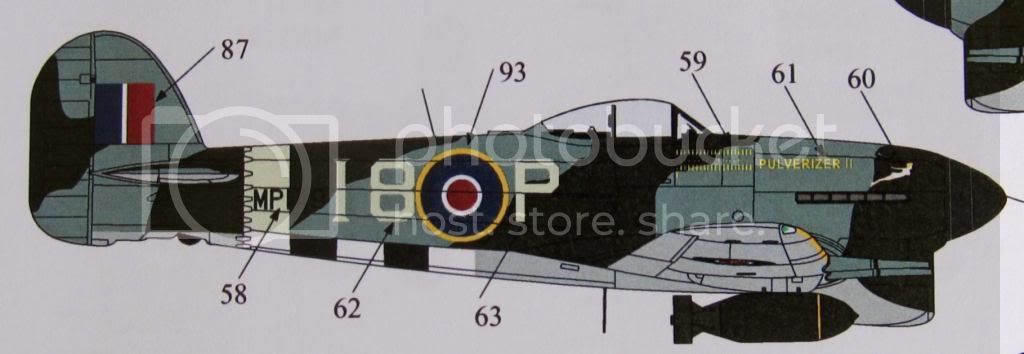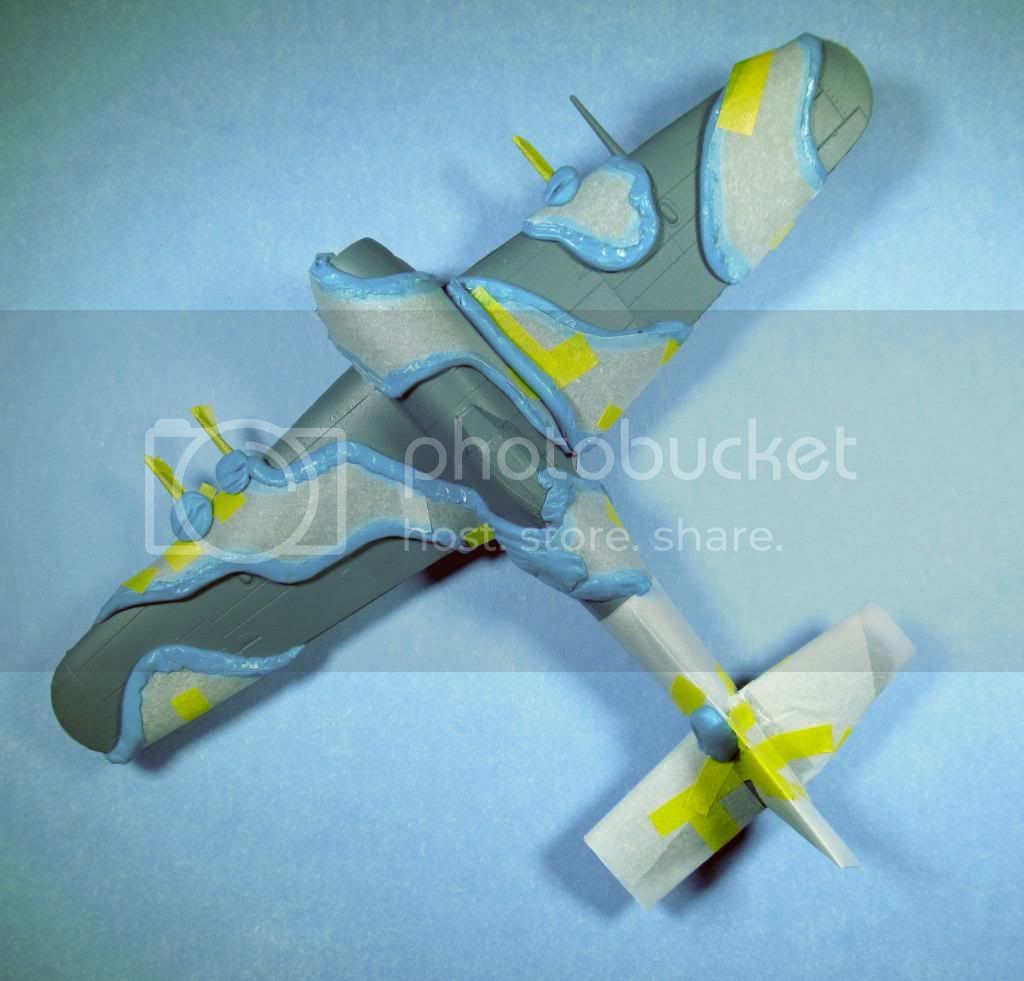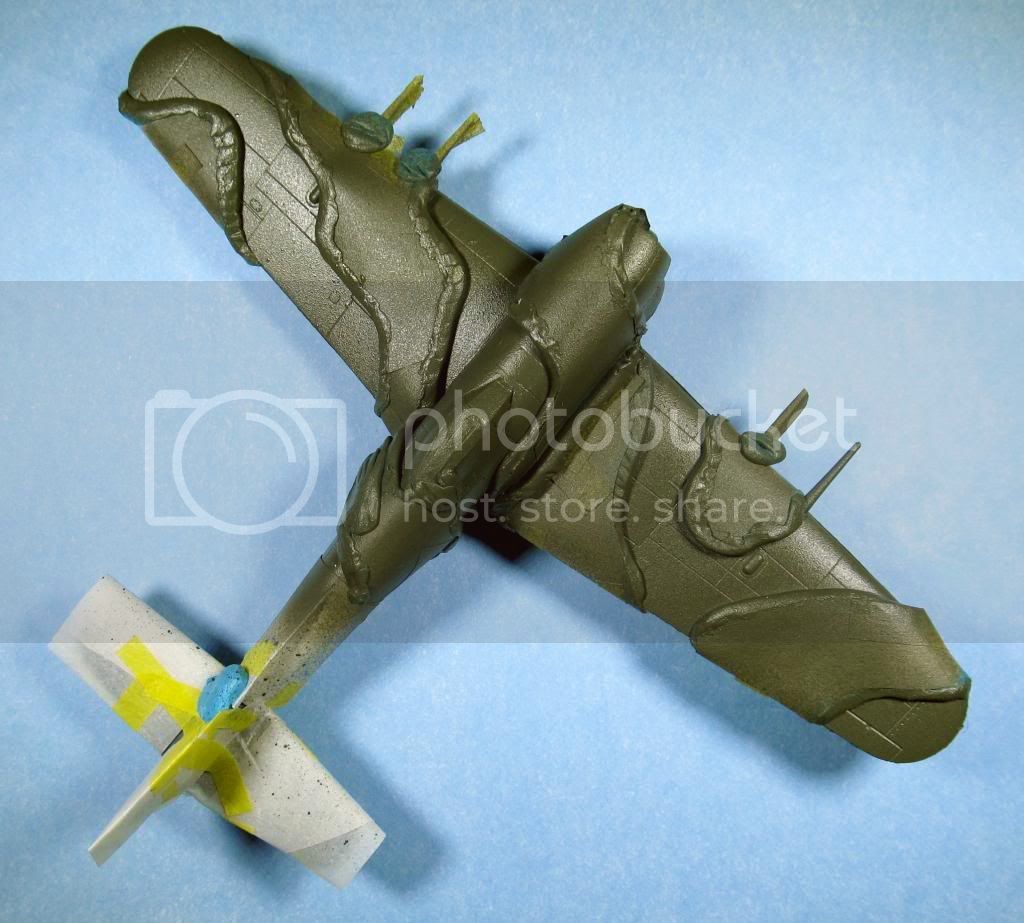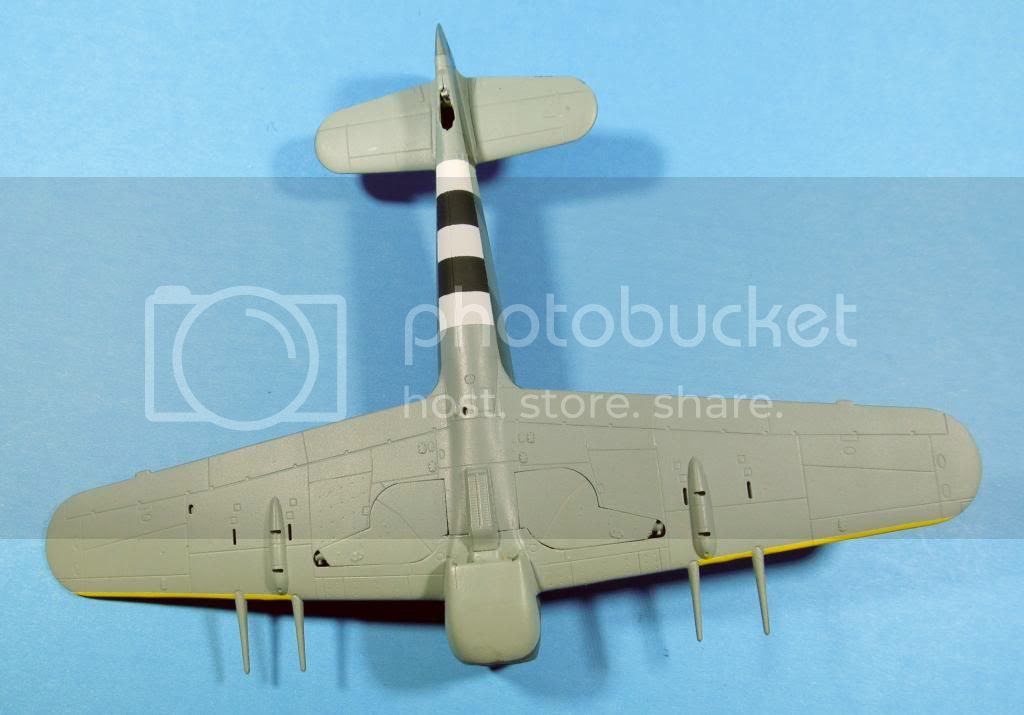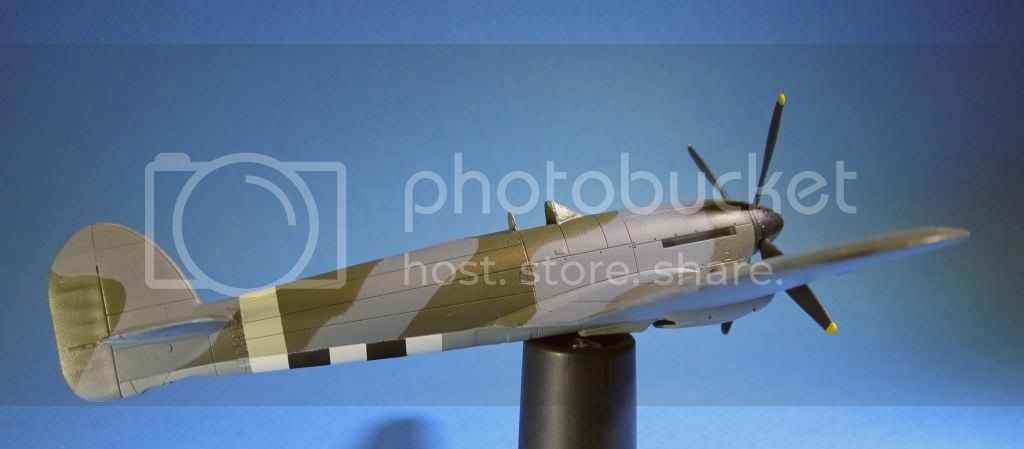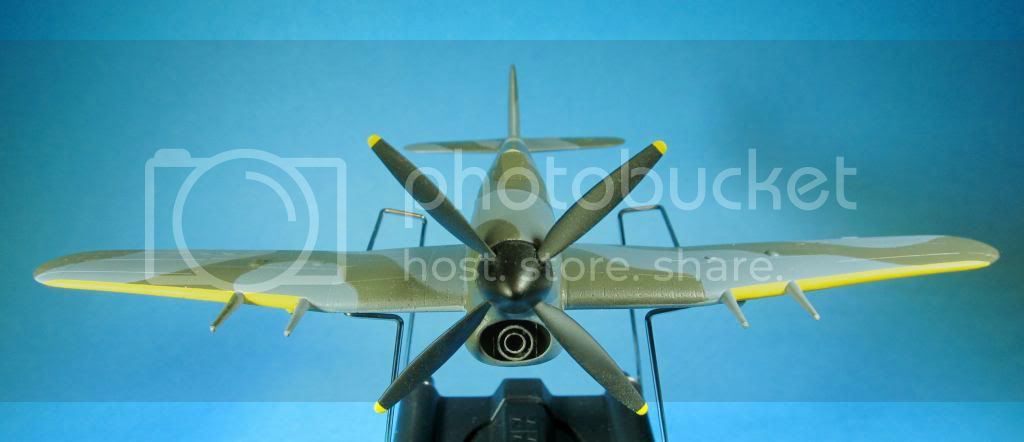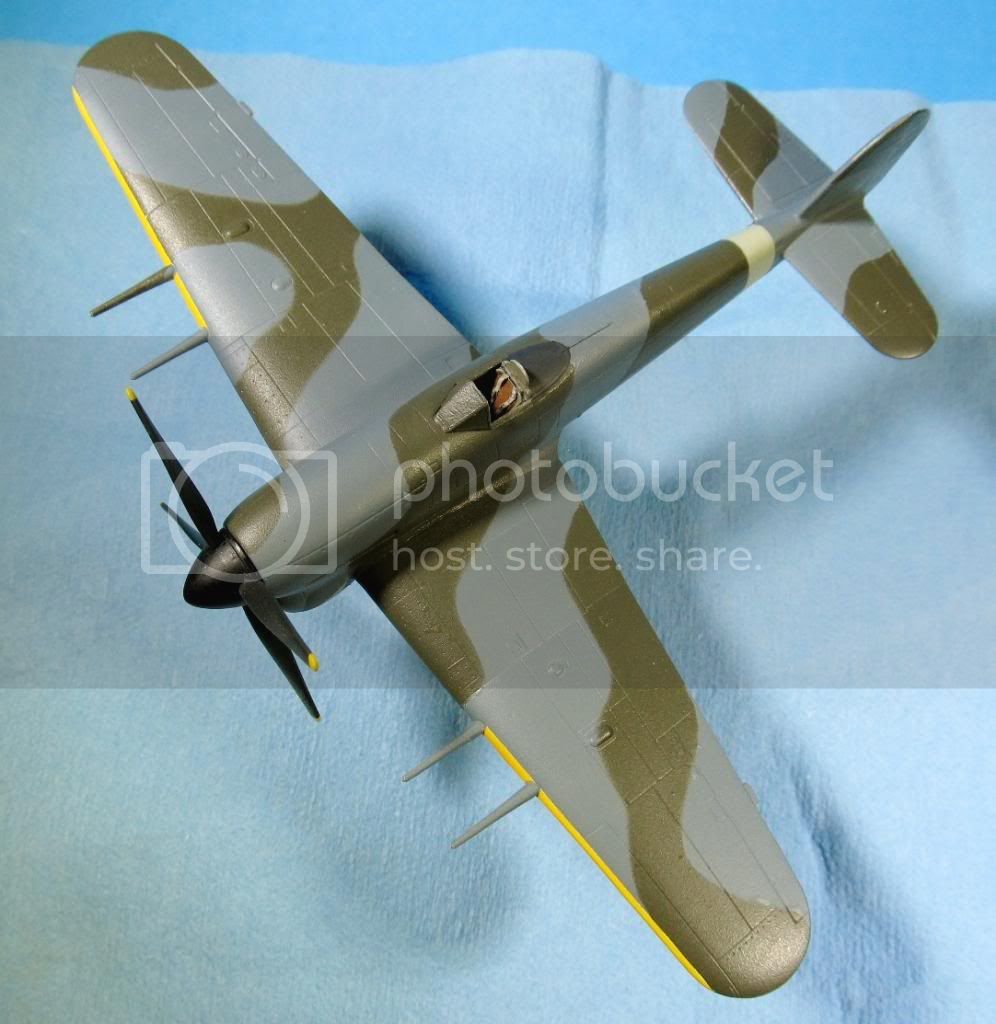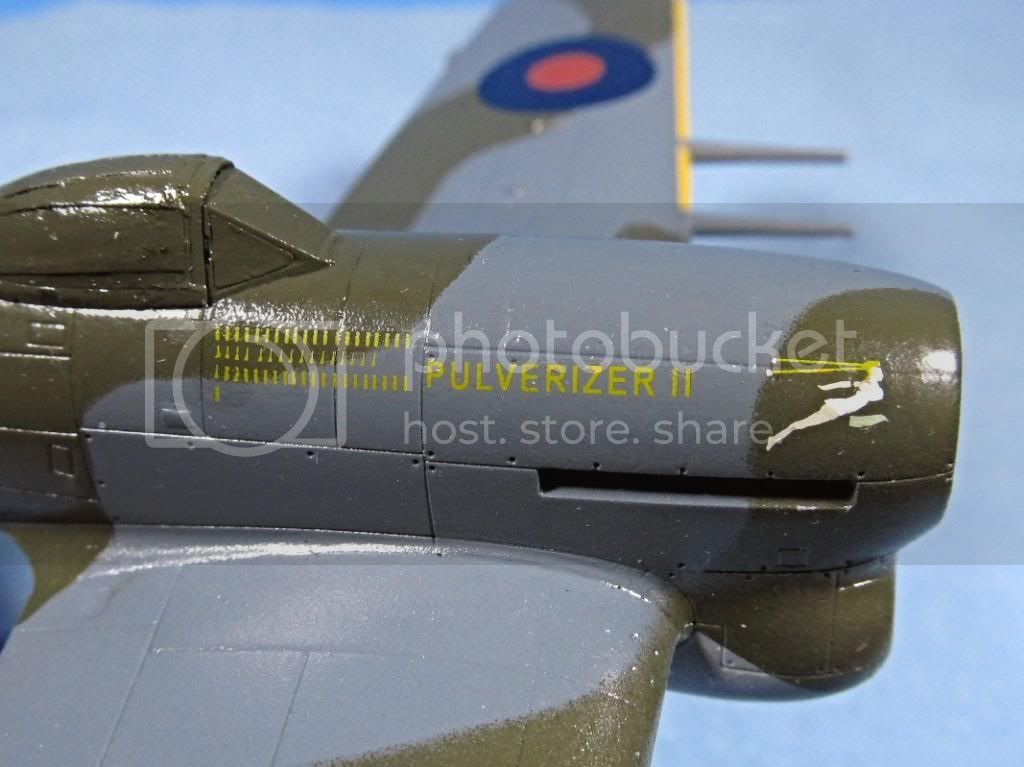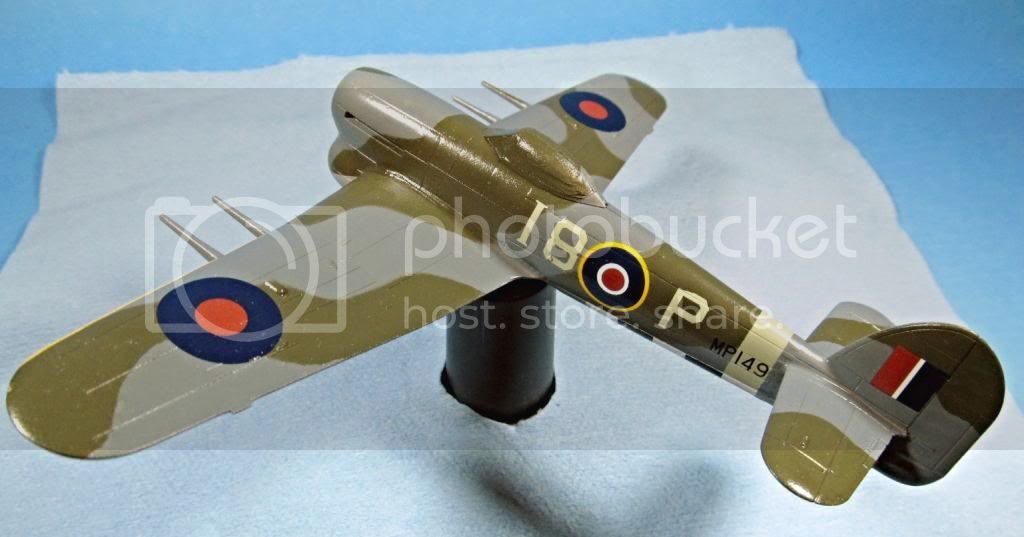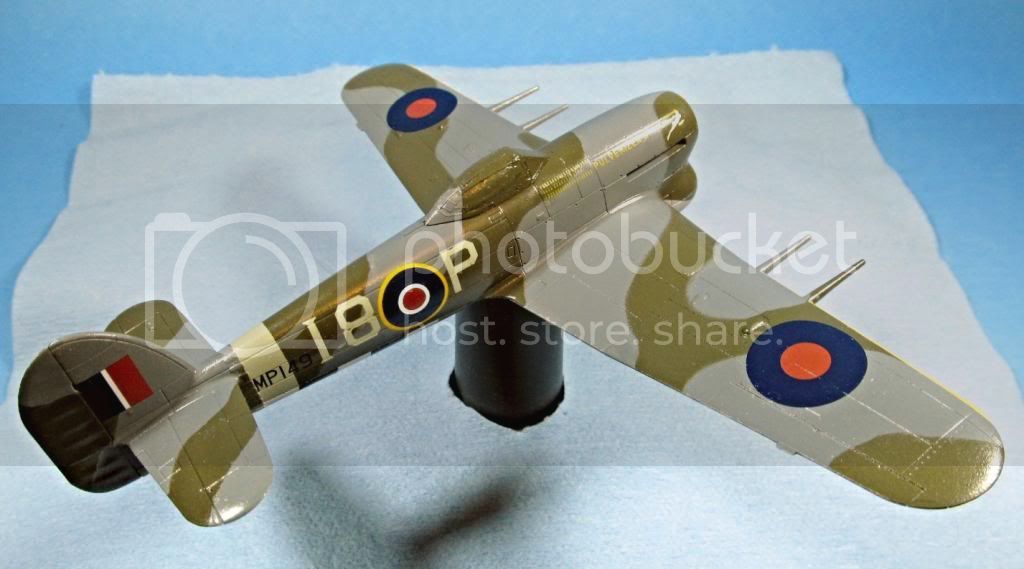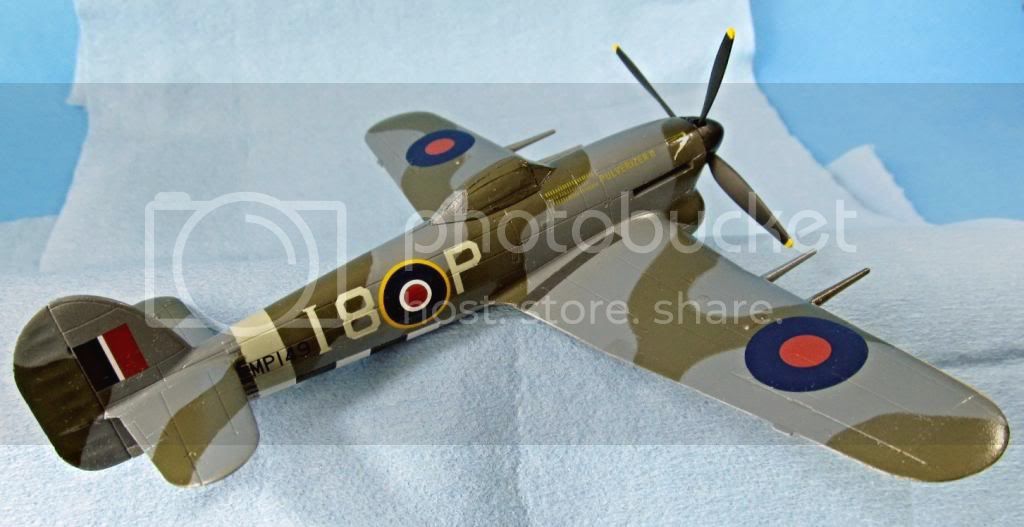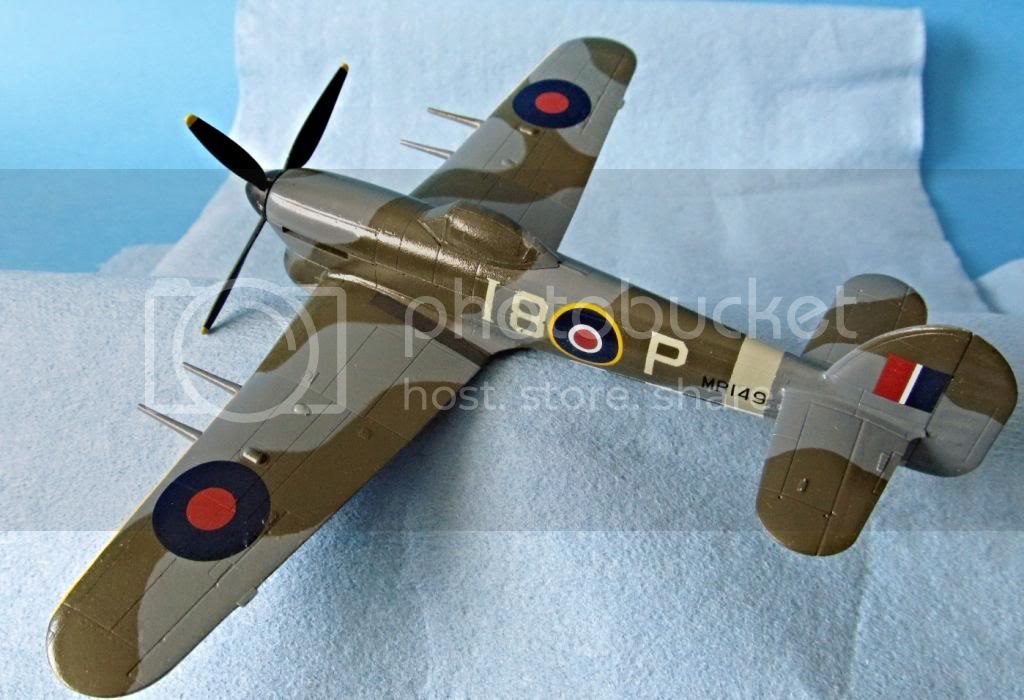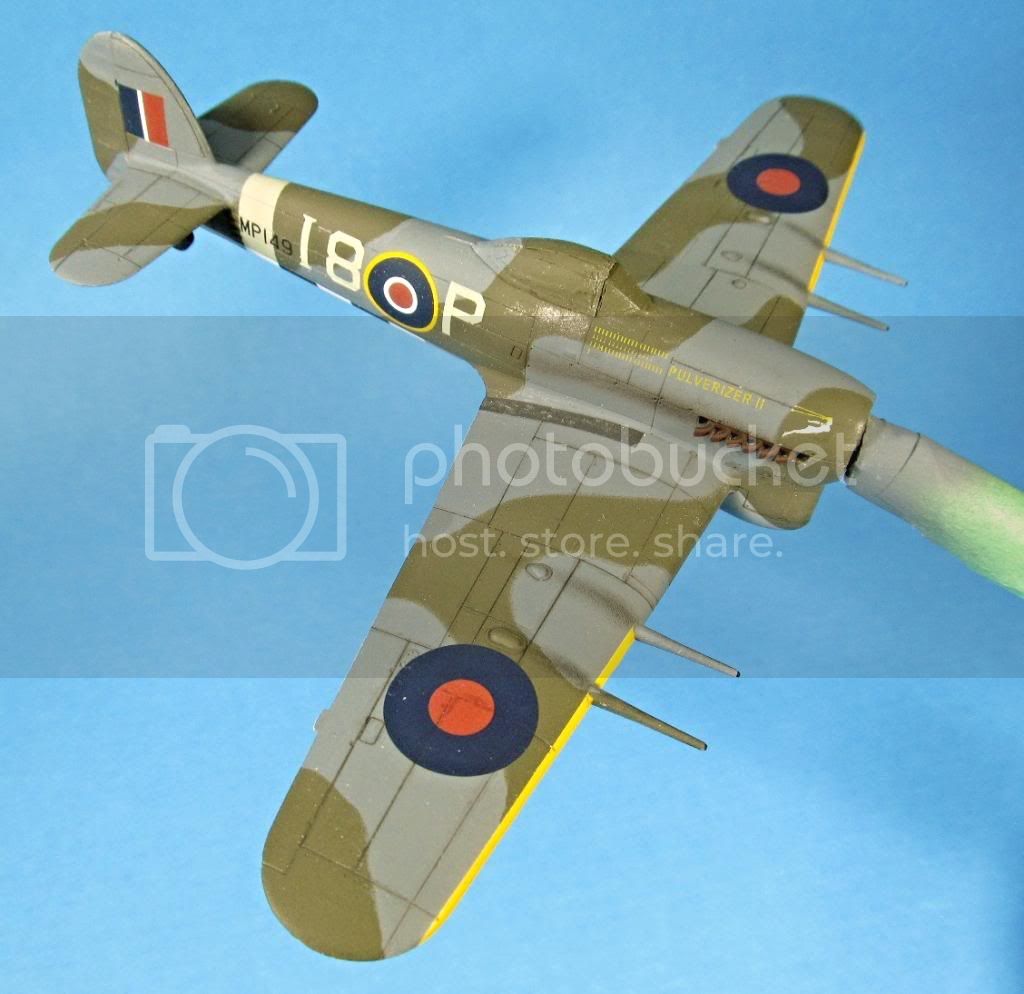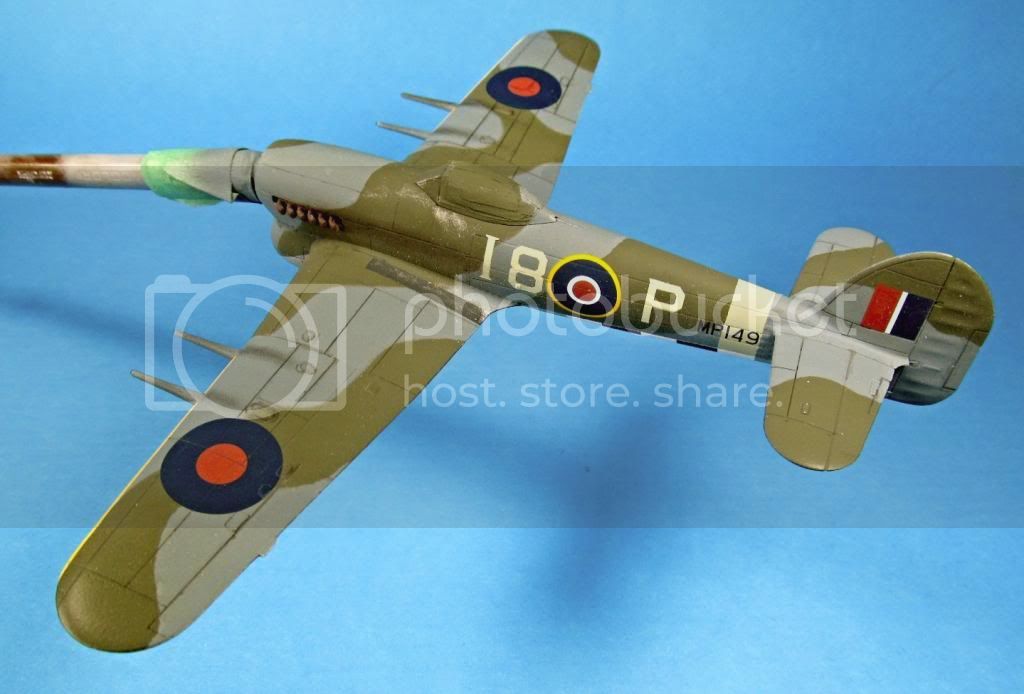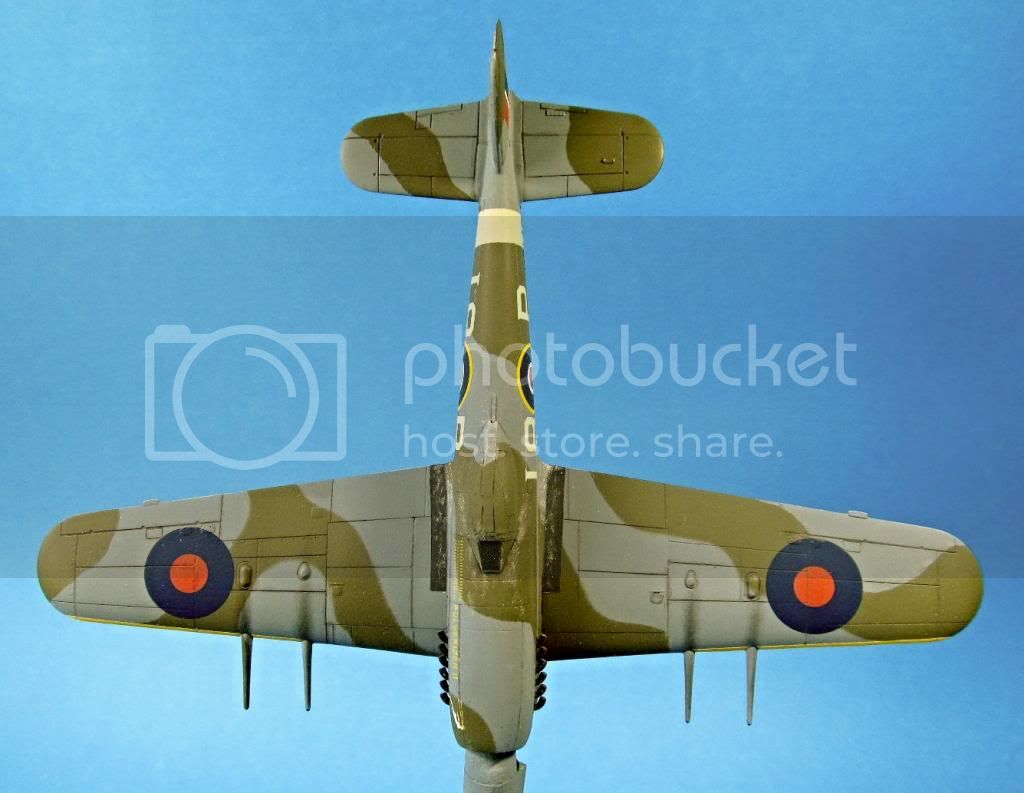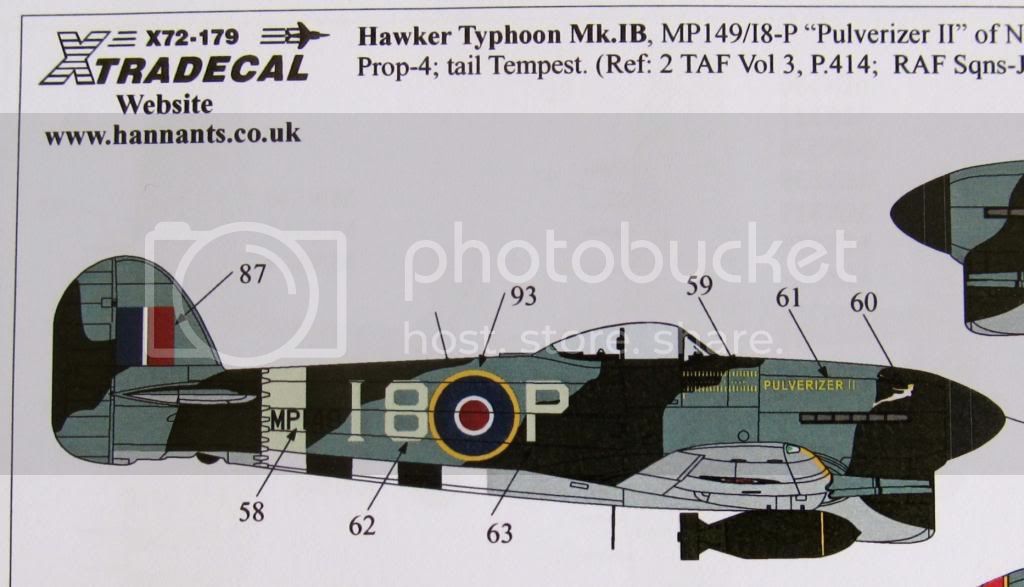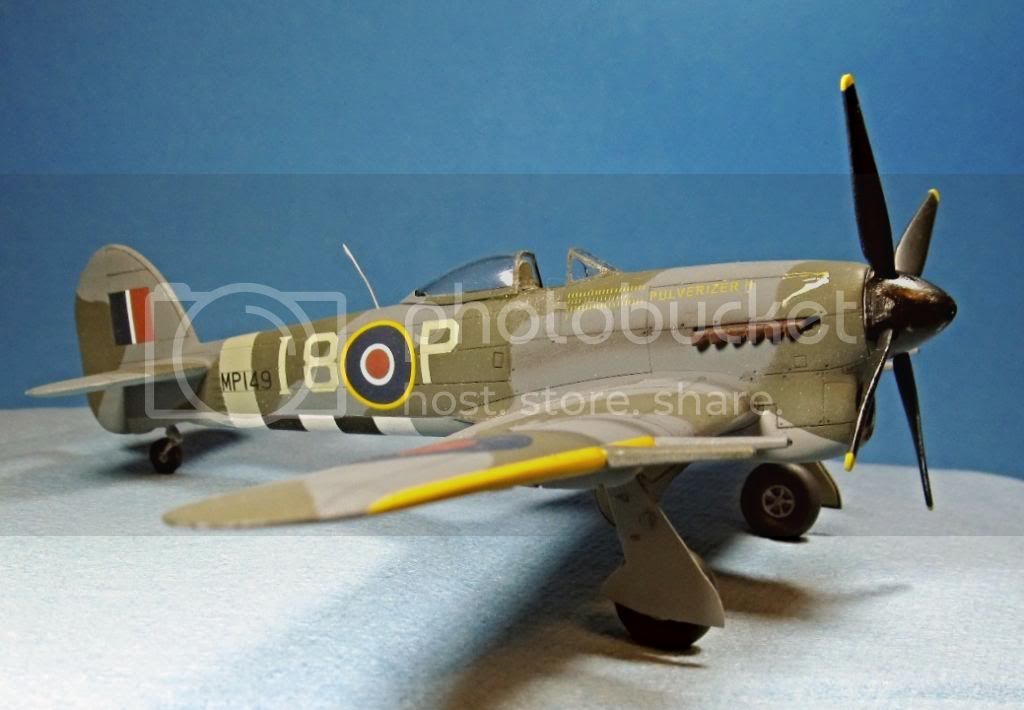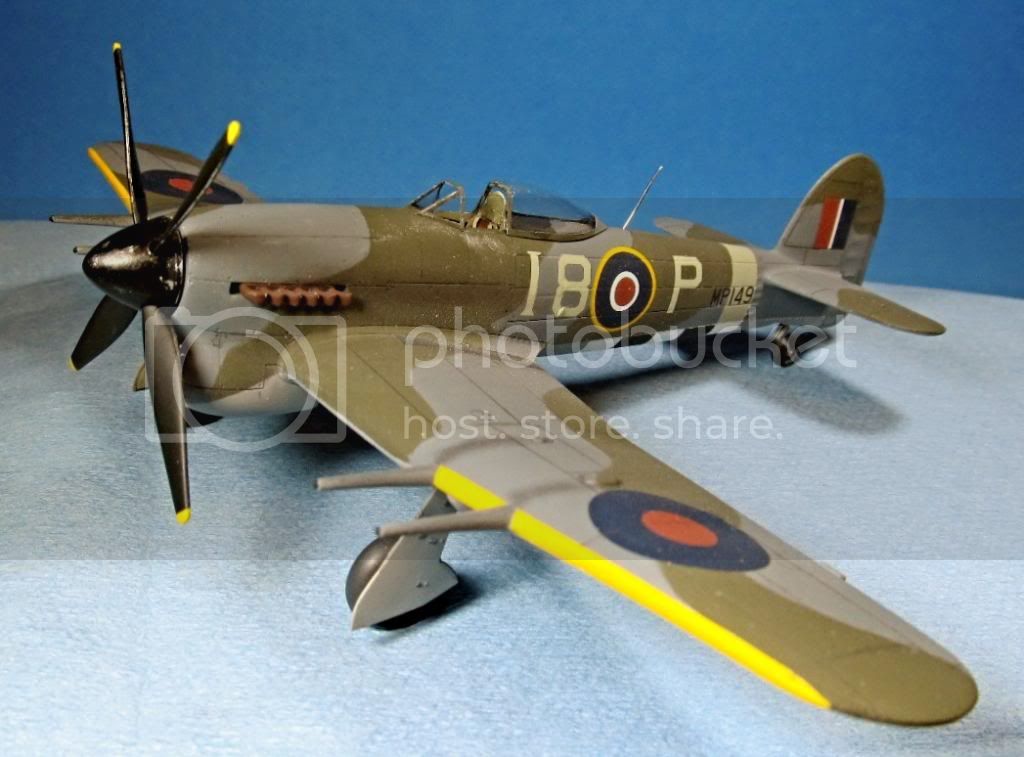Ben, Outstanding "paintmanship". It's the end results that count. Your method (one that I use these days as well) works extremely well, and like I said the feathering is near perfect. Both the yellow leading edges and the belly Invasion stripes look perfect to me. Well done.
As for weathering with filters and washes, it's easier then you think. 1st off gloss, decal, then gloss again to seal the decals.
Do all your paint chipping, rust, or other effects now. Let dry. You don't need to seal again after this stage.
Here's my simple method for basic weathering:
Apply a dark colored pin wash to the recessed panel lines, and nooks & crannies. Enamel and oils seem to flow better then Acrylics even when heavily thinned Carefully remove excess lightly rubbing as close to the lines but not over if possible using a Qtip dampened with the proper base thinner. Let the pin wash completely dry 1st. Other wise you'll end up wicking up a lot of the wash that's in the panel lines, and having to re-do it.
If you're going to use as an example Flory Dark or light wash instead of/or after a traditional pin wash, do it now. It will darken the light colored undersides very nicely. Again, I don't seal the flory filters.
Once dry apply your 1st filter. I apply filters with my airbrush. Over areas that receive direct sunlight light, and the harshest weathering, use the base color paint cut with light gray or white, and thinned 20/80 paint to thinner. Light passes to slowly build up the effect you want. Then a few coats of Dust, light Earth, thinned applied the same way.
As you get comfortable with this method, you can start to add more white, grays, Yellows, etc. to the filters and apply in a more splotchy random pattern to further the weathering/fading effects.
Once dry, seal with flat clear coat.
There are many more methods and applications used in armor model weathering (that's where I learned this from), like dots of oil colors and streaking, that just don't translate to aircraft very well.
Since you're airbrushing on the filters, you really don't have to be concerned about the filter eating through your sealer gloss coat. Working washes with a brush, you do.
Joel
